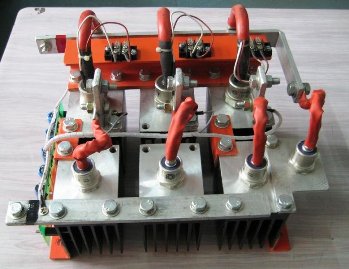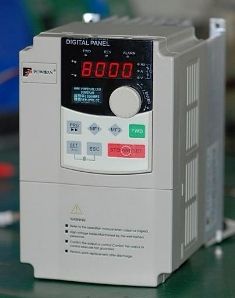Electrical energy converters
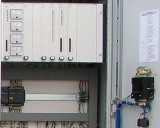 A converter is an electrical device that converts electricity by one parameter or quality indicators in electricity with other parameter values or quality indicators. Parameters electrical energy it can be the type of current and voltage, their frequency, the number of phases, the phase of the voltage.
A converter is an electrical device that converts electricity by one parameter or quality indicators in electricity with other parameter values or quality indicators. Parameters electrical energy it can be the type of current and voltage, their frequency, the number of phases, the phase of the voltage.
According to the degree of controllability, electrical energy converters are divided into uncontrollable and controlled... In controlled converters, the output variables: voltage, current, frequency — can be regulated.
On an elementary basis, power converters are divided into electric machine (rotating) and semiconductor (static)... Electric machine converters are applied based on the use of electric machines and currently find relatively rare application in electric drives. Semiconductor converters can be diode, thyristor and transistor.
By the nature of electricity conversion, power converters are divided into rectifiers, inverters, frequency converters, AC and DC voltage regulators, and AC phase converters.
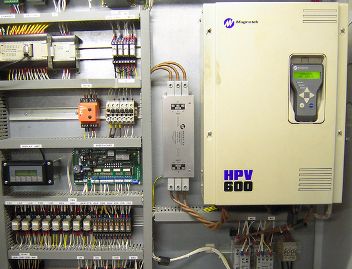
In modern automated electric drives, they are mainly used semiconductor thyristor and transistor converters of direct and alternating current.
The advantages of semiconductor converters are wide functionality for controlling the electricity conversion process, high speed and efficiency, long service life, convenience and ease of maintenance during operation, wide possibilities for applying protection, signaling, diagnostics and testing of both electrical propulsion and technological equipment.
At the same time, semiconductor converters are characterized by some disadvantages. These include: high sensitivity of semiconductor devices to current overload, voltage and their rate of change, low noise immunity, distortion of sinusoidal current and network voltage.
A rectifier called a converter of alternating voltage to direct current (direct) current.
Uncontrolled rectifiers do not provide voltage regulation on the load and are performed on semiconductor uncontrolled devices with single-sided conduction — diodes.
Controlled rectifiers are made on controlled diodes - thyristors and allow you to adjust their output voltage due to appropriate control thyristors.
Controlled rectifier
Rectifiers can be irreversible and reversible.Reversing rectifiers allow you to change the polarity of the rectified voltage on their load, while non-inverting rectifiers do not. According to the number of phases of the AC input voltage, the rectifiers are divided into single-phase and three-phase, and according to the scheme of the power section - into bridge and zero output.
An inverter called a DC-to-AC voltage converter. These converters are used as part of frequency converters when the drive is powered from an AC mains or as an independent converter when the drive is powered from a DC voltage source.
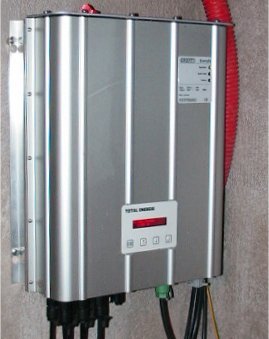
Inverter
The largest application is found in electric drive circuits autonomous voltage and current invertersimplemented on thyristors or transistors.
Autonomous voltage inverters (AVI) have a rigid external characteristic, which is the dependence of the output voltage on the load current, as a result of which, when the load current changes, their output voltage practically does not change. Thus the voltage inverter behaves with respect to the load as Source of EMF.
Autonomous current inverters (AIT) have a «soft» external characteristic and have the properties of a current source. In this way, the current inverter behaves as a current source with respect to the load.
A frequency converter (FC) is called a standard frequency AC voltage converter and a variable frequency AC voltage converter. Semiconductor frequency converters are classified into two groups: direct-coupled frequency converters and DC-coupled frequency converters.
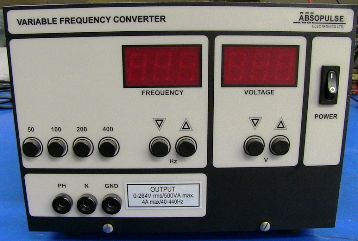
Laboratory frequency converter
Direct frequency converters allow changing the frequency of the load voltage only in the direction of its decrease compared to the frequency of the supply voltage. Frequency converters with an intermediate DC connection do not have this limitation and find a wider application in electric drive.
Industrial frequency converter for electric drive control
An AC voltage regulator is called a converter of AC voltage of standard frequency and voltage to regulated AC voltage of the same frequency. They can be single-phase and three-phase and use, as a rule, single-operation thyristors in their power section.
A DC voltage regulator is called a converter of an unregulated DC voltage source into a regulated load voltage. In such converters, power semiconductor controllable switches operating in pulse mode are used, and the voltage regulation in them is due to the modulation of the supply voltage.
It was the most common pulse width modulation, in which the duration of the voltage pulses changes with a constant frequency of their repetition.
Also read on this topic: Improvement of semiconductor converters in automated electric drive systems

